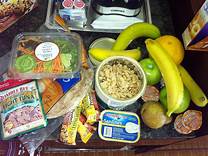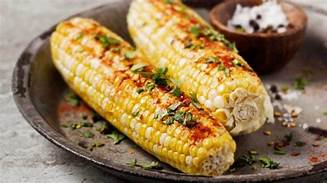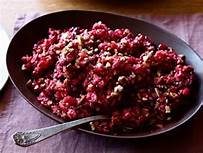Importance of well balance diet
All food contains all of the nutrients we need to be healthy, it is necessary to eat various foods in sufficient amounts. A good diet will include many different foods, and sufficient in quantity and quality to meet an individual’s need for food energy and other micro nutrients.
SPINACH
Typical serving size:
½ cup, cooked (90 g), or 1 cup, raw (30 g)HOW IT HARMS
Mineral absorption Kidney and bladder stones Drug interactionWHAT IT HEALS
Macular degeneration Cancer Congenital neurological birth defects Anemia Bone healthQUICK TIP:
Ditch the dirt Before serving spinach, be careful to remove all the sand and dirtOne effective method is to submerge the spinach in a bowl of cold water and let the sand fall to the bottom, then remove and rinse the leaves
Dry them if making a salad
If you are cooking the spinach, the water left on the leaves may be just about the right amount with which to steam it
Spinach is a popular dark green leafy vegetable that can be served either raw or cooked
Contrary to popular belief, spinach is not an especially good source of iron
The myth about its high iron content arose from an analysis in which a decimal point was erroneously displaced
But the vegetable’s dark green leaves do contain many other valuable nutrients
For example, a mere half cup of cooked spinach provides a full day’s supply of vitamin A, and 419 mg of potassium, as well as vitamin C, riboflavin, and vitamin B6
To avoid losing its vitamin content, don’t overcook spinach
Instead, steam or stir-fry it
These cooking methods also preserve texture and flavor
Although some of these nutrients are lost in cooking, a ½-cup (179 g) serving of the cooked vegetable actually provides more nutrition than 1 cup (28 g) served raw because it takes a full 2 cups of leaves to cook down into a ½-cup serving
In addition, heating makes the protein in spinach easier to break down
The value of raw spinach can be enhanced by serving it with citrus slices for added vitamin C
Health Benefits
Promotes vision healthSpinach is rich in carotenoids, plant pigments that are responsible for its dark green color
Among these carotenoids are lutein and zeaxanthin, which help prevent macular degeneration, the leading cause of blindness in older adults
Cooking spinach helps to convert lutein into more bioavailable forms
To enhance the carotenoid absorption, eat spinach with some heart- healthy fat
Can help prevent cancer
The antioxidants and bioflavonoids in spinach help block cancer- causing substances and processes
May help prevent birth defects
A half cup of cooked spinach provides 105 mcg (micrograms) of folate, more than 25% of the Recommended Dietary Allowance (RDA)
Folate is especially important for women who are pregnant or who may be planning a pregnancy, because it helps prevent congenital neurological defects
Folate deficiency can also cause a severe type of anemia
Boosts bones
Phylloquinone is the most common form of vitamin K found in dark greens such as spinach
Vitamin K is needed for proper blood clotting and may play a role in preserving bone health
Some research suggests that it may increase bone density and reduce fracture rates
Both the Nurses’ Health Study and the Framingham Heart Study found that people who consume the most vitamin K have a lower risk of hip fractures than those who consume less
WARNING
!FOOD-DRUG INTERACTION
Spinach may interfere with blood-thinning drugsIf your physician has prescribed blood-thinning medication, such as heparin or warfarin (Coumadin), it is wise to moderate your intake of vitamin K–rich foods, such as spinach
Excess vitamin K can counteract the effects of these drugs
100% of the vitamin A you need every day is in ½ cup cooked spinach
Health Risks
Mineral absorptionThe nutritional benefits of spinach are somewhat offset by its high concentration of oxalic acid which inhibits the absorption of the iron, calcium, and other minerals found in spinach
To increase mineral absorption eat spinach with other foods that are rich in vitamin C
Oxalic acid can also pose a problem for people susceptible to kidney and bladder stones that form from oxalates




